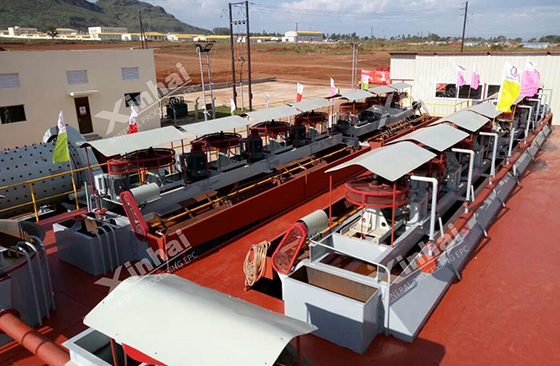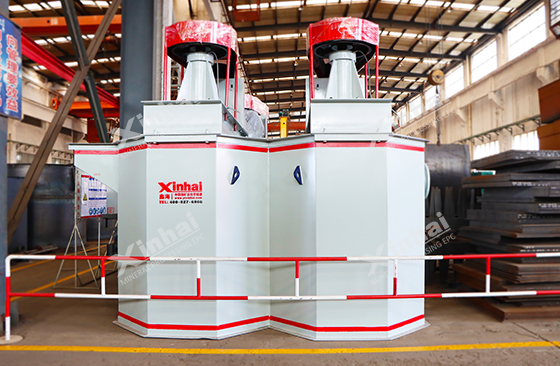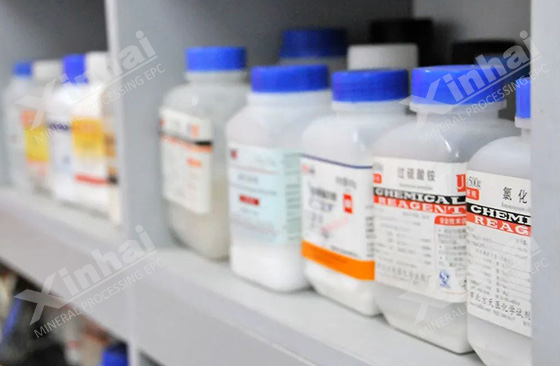
As an important strategic resource, phosphate ore can be used as a raw material for chemical products such as phosphate fertilizer, yellow phosphorus, phosphoric acid and other phosphorus products, and can also ensure food safety. It is the material basis of fine phosphorus chemical industry, so it occupies an important position in economic and social development. In recent years, with the continuous development and utilization of phosphate resources, rich phosphate ore and easy-to-select phosphate ore resources are decreasing. Therefore, it is necessary to strengthen the development and utilization of medium- and low-grade phosphate resources and difficult-to-select colloidal phosphate resources, understand phosphate ore beneficiation technology and beneficiation agents, and then select appropriate ore dressing methods according to the specific ore characteristics of phosphate, which is conducive to the comprehensive utilization of phosphate resources and improve the utilization value of mineral resources.

In actual ore dressing, common phosphate ore dressing processes include scrubbing and desludging, flotation, heavy medium dressing, roasting-digestion, chemical leaching, photoelectric dressing and combined dressing technology.
1. Scrubbing and desludging method
This method is mainly used to treat weathered or muddy phosphate minerals. The phosphate ore is first scrubbed and deslued, and then screened and graded. This is a physical beneficiation method with the advantages of simple process, no consumption of chemical agents, and can be produced in the open air. Therefore, it is an environmentally friendly beneficiation method. This method has been widely used at home and abroad.

2. Flotation method
Flotation is the most common technology for phosphate ore beneficiation. Commonly used flotation methods include direct flotation, reverse flotation, forward-reverse flotation, reverse-forward flotation and double-reverse flotation. These methods can significantly improve flotation efficiency and concentrate quality by flexibly adjusting the flotation sequence and reagent combination.
3. Heavy medium mineral processing method
Heavy media beneficiation is a phosphate ore gravity separation technology. The main medium cyclone is the separation equipment. In the process, a medium weighting agent is added. It adopts one stage of washing and desliming and one coarse and one fine heavy medium beneficiation process to obtain high-quality phosphorus mineral concentrate.

4. Roasting-digestion process
The roasting-digestion process can be used to treat calcium phosphate ore (phosphate ore with high carbonate content and low phosphate content). The phosphate ore is roasted at a high temperature of 900℃. After the carbonate minerals react at high temperature, fine-grained hydroxides will be generated. Subsequently, desludging and classification processes are used to remove calcium and magnesium hydroxides to enrich the phosphate ore. Although this process is simple, the operation requirements are high, and the production cost generated by the roasting process is high.
5. Chemical leaching method
This method uses chemical technology to reduce the impurity content in the ore and improve the purity of the mineral. It is mainly used to treat calcium phosphate ore with low carbonate content and extremely fine embedded particle size or to separate impurities in flotation concentrate. The leaching agent can be selected from ferric chloride, sulfuric acid or sulfur dioxide, among which sulfuric acid is commonly used.
6. Electrostatic separation
Electrostatic separation is a method of separating gangue minerals from target minerals by using electricity and mechanical force when the minerals pass through an electric field based on the different electrical properties of various minerals. Electrostatic separation has been put into practical use in phosphate ore dressing due to its advantages of no wastewater, no environmental pollution, simple equipment structure, easy operation, simple maintenance, and low production cost.
7. Combined beneficiation method
With the continuous exploitation of resources, phosphate resources are gradually developing towards lean, fine, mixed, and difficult methods. It is difficult to obtain high-quality phosphate concentrate products using a single beneficiation method. Therefore, combined beneficiation technology has become the main way to solve this type of phosphate ore.

Flotation reagents are the core elements in the phosphate ore flotation process and will directly affect the results of phosphate ore flotation. The following mainly introduces the collectors and depressants used in phosphate ore flotation.
In phosphate ore flotation, commonly used collectors include: modified fatty acid collectors, cationic collectors, amphoteric collectors, and mixed collectors.
The specific selection of flotation reagents needs to be combined with the properties of the ore, the flotation process and the environmental requirements. By optimizing the formula and the method of use, it can not only improve the flotation efficiency, but also reduce the impact on the environment.
The above is an introduction to the common beneficiation technologies and reagents for phosphate ore. Different beneficiation technologies have specific application conditions and technical advantages. Scientifically matching technologies and beneficiation reagents according to local conditions can effectively improve beneficiation efficiency and resource utilization, reduce beneficiation production costs, and reduce environmental impact. Reasonable beneficiation technologies and reagents can not only achieve efficient utilization of phosphate resources, but also promote the continuous growth of the economy of beneficiation plants.
To find out more about our products and solutions, please fill out the form below and one of our experts will get back to you shortly.